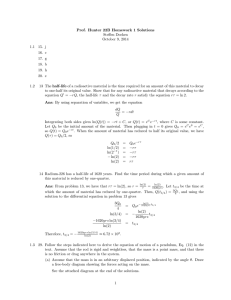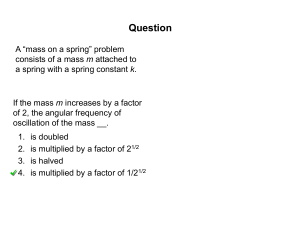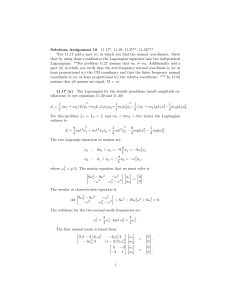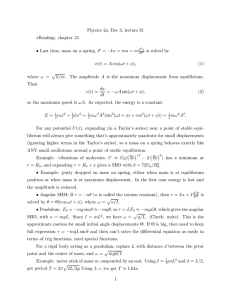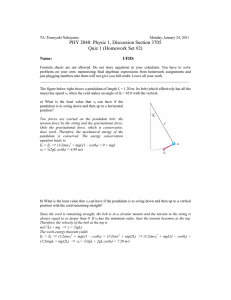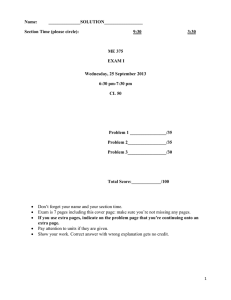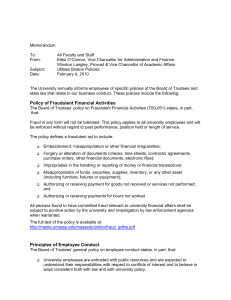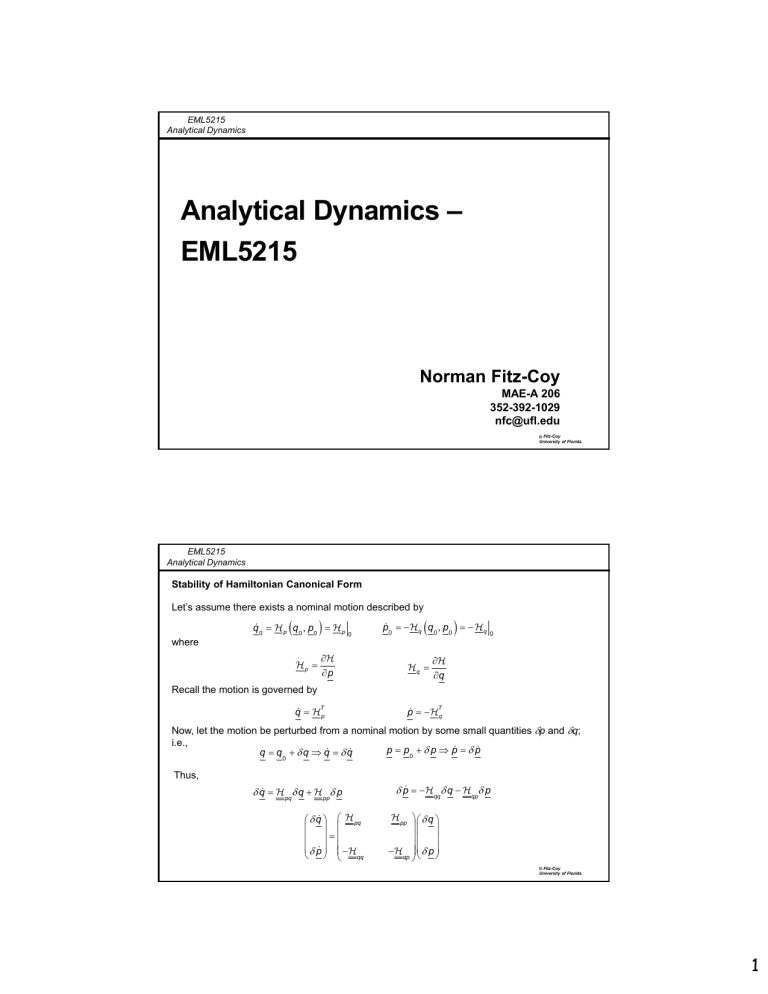
EML5215 Analytical Dynamics Analytical Dynamics – EML5215 Norman Fitz-Coy MAE-A 206 352-392-1029 nfc@ufl.edu © Fitz-Coy University of Florida EML5215 Analytical Dynamics Stability of Hamiltonian Canonical Form Let’s assume there exists a nominal motion described by where q 0 p q 0 , p0 p p 0 p p 0 q q 0 , p 0 q q 0 q Recall the motion is governed by T q p T p q Now, let the motion be perturbed from a nominal motion by some small quantities p and q; i.e., p p0 p p p q q q q q 0 Thus, q pq q pp p q pq p qq p qq q qp p pp q qp p © Fitz-Coy University of Florida 1 EML5215 Analytical Dynamics The stability is determined from the eigenvalues of the linearized system In pq pp 1 A det det 0 T I n qq pq det I2 n Thus, the Hamiltonian in terms of the generalized momenta and speeds is: det In pq I I I T n n pq pq n qq 1 pq 0 pp which results in a polynomial in with only even coefficients. Thus, the roots of the polynomial will be symmetric about the origin (from Routh’s array). Now, let’s examine the pendulum problem eˆ y 2 1 1 p2 p 1 p mgL cos mgL cos pi q i p 2 2 i 1 2 2 mL mL mL2 g eˆ x L Thus, p p p mL2 mgL sin © Fitz-Coy University of Florida EML5215 Analytical Dynamics Hence, pp p p p p 1 p mL2 mL2 mgL sin 0 p p 0 det In pq p p p 0 mL2 mgL sin mgL cos I I I T n pq n pq qq n det pq pq pq qq pq pp 1 2 2 pq qq pp 2 02 pq 1 pp 1 1 mgL cos 2 mgL cos mL2 mL2 1 mgL stable mL2 1 mgL unstable 2 mL2 0 2 © Fitz-Coy University of Florida 2
